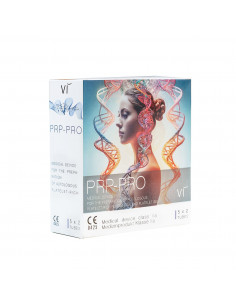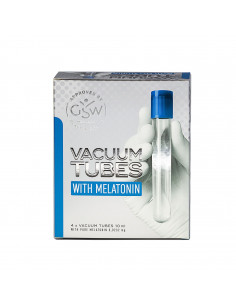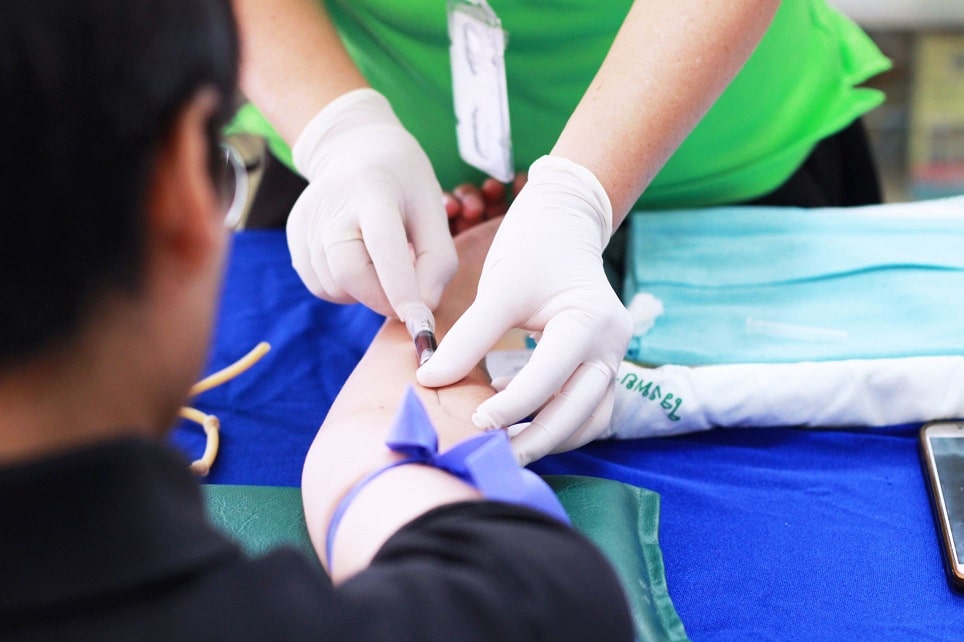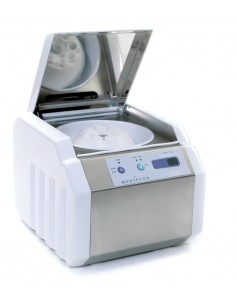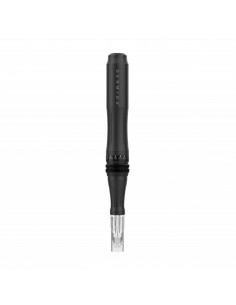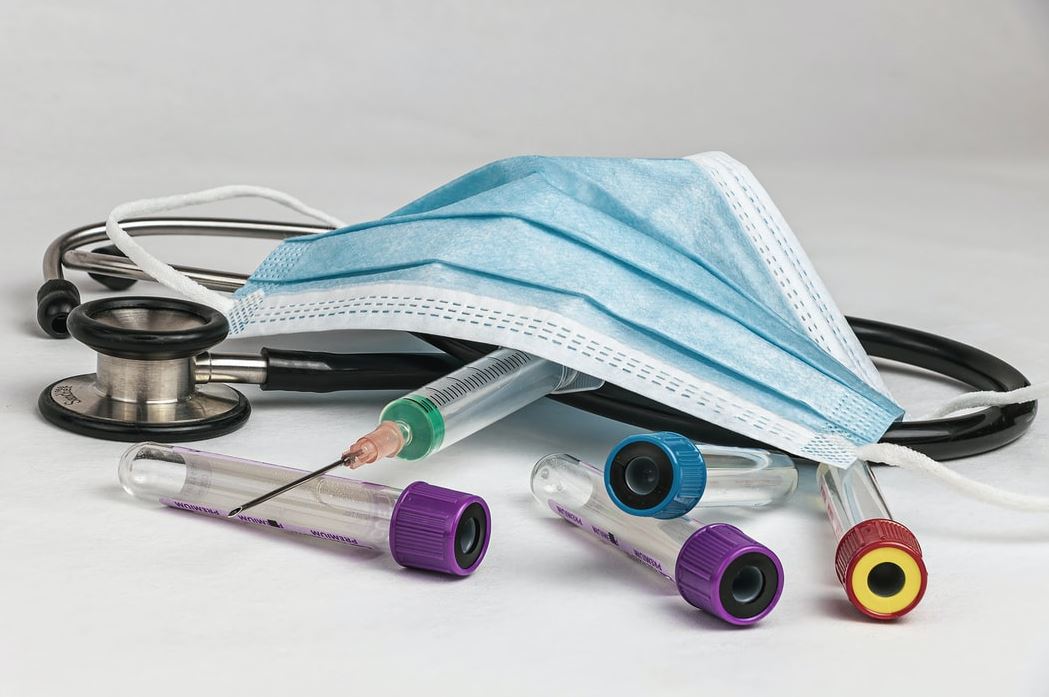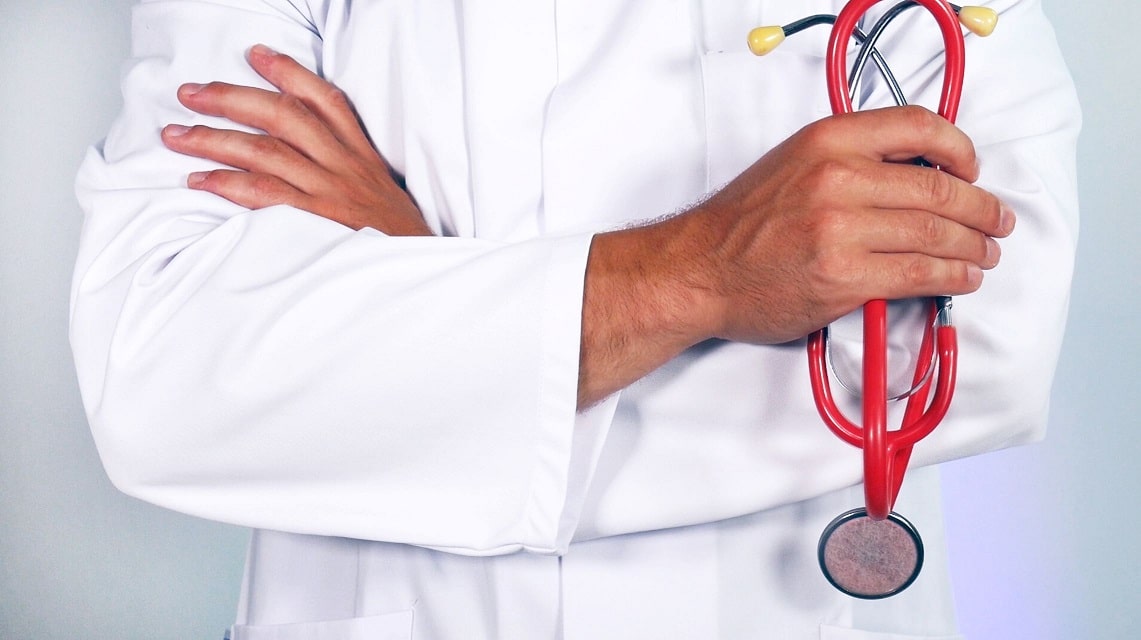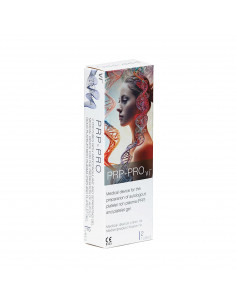What is PRP treatment?
A PRP treatment, the abbreviation stands for "Platelet Rich Plasma", is a prime example of the miraculous progress in medicine. Imagine your own blood being drawn, processed in a centrifuge and then used to improve your health and well-being. It sounds almost like science fiction, but it is a realistic and effective treatment method.
The highly concentrated platelets used in this treatment are rich in growth factors and have anti-inflammatory and regenerative properties. This makes them extremely useful for a variety of applications.
One of these is "vampire lifting." Here, PRP is used to rejuvenate the skin on the face, neck and décolleté, improve skin texture and reduce wrinkle depth. It is truly amazing how this precious golden plasma can be used to bring out our natural beauty and help us feel more comfortable and confident in our skin. What a wonderful time to be alive!
Overview of PRP treatment
PRP (platelet-rich plasma) therapy is a treatment in which the patient's blood is processed to extract the components related to tissue regeneration and administered to the diseased region to support the "body's own repair forces" and achieve improvement.
Since it is the patient's own blood, it can be used without serious side effects. PRP plasma and platelets have been found to contain components that stimulate and promote tissue repair.
Concentrated PRP can accelerate the healing process at the injection site by releasing growth factors that stimulate regenerative cells to do their job faster, speeding up tissue regeneration and healing.
Statistical studies demonstrate the correlation between concentrated administration of these components and early healing of localized areas, as well as pain reduction. Treatment with PRP allows the body to heal itself by supporting its own repair system, but at a faster pace.
Learn more about the mechanism of action of PRP treatments
Platelets release a number of fluids and growth factors in processes such as wound healing (referred to as "wound healing").
These include:
- PDGF (platelet-derived growth factor),
- TGF-β (beta mutant growth factor),
- VEGF (vascular endothelial growth factor),
- FGF (fibroblast growth factor),
- IGF (insulin-like growth factor),
- HGF (hepatocyte growth factor)
- and BMP (bone morphogenetic protein).
In basic experiments using cell culture methods, PRP promotes chondrocyte differentiation and proliferation and cartilage matrix production through the action of these protein molecules. PRP has also been shown to increase hyaluronic acid in the articular cavity, rubricin in articular cartilage surface cells and synovial cells, and to inhibit the expression of matrix degrading enzymes (MMPs).
Platelet-rich plasma can be extracted and purified in a variety of ways, and the number of platelets per ml and the presence or absence of white blood cells can vary from sample to sample. The presence or absence of leukocytes can significantly affect the effect of PRP.
Leukocyte-rich PRP is thought to be more proinflammatory, exhibit catabolic effects (degradation of tissue structures) at the injection site, and contain more substrate-degrading enzymes (e.g., MMP: matrix-degrading enzymes).
Leukocyte-depleted PRP, on the other hand, which contains fewer leukocytes, is said to have anti-inflammatory effects, is assimilated at the injection site (i.e., builds up tissue structures), and contains fewer substrate-degrading enzymes (e.g., MMPs: matrix-degrading enzymes).
The PRP procedure consists of several steps:
- Blood collection from the patient with special PRP tubes. It is performed from the ulnar vein, the volume can range from 20 to 100 ml, depending on the treated body region and the duration of treatment
- Production of enriched plasma. Red blood cells are separated from plasma by centrifugation. This is done as follows: Platelet-rich plasma is prepared from the patient's autologous whole blood by plasmapheresis using a special Centrifuge is used. The separation principle is based on centrifugal force. In this way, each blood component is separated based on its different specific gravity and can then be collected separately. This is called plasma exchange.
- Injection of the plasma into the injured area (depending on the therapeutic goal, the enriched plasma can be injected into the joint, under the skin or intradermally)
Platelets are essentially fragments of a megakaryocyte (the precursor cell of all platelets) and contain on their surface a large number of growth factors - proteins that stimulate cell synthesis. This is their success in hemostasis (stopping bleeding).
If the concentrated platelets get back into the body, they actively begin to stimulate the growth of new cells. Fibroblasts and muscle fibers are sensitive to growth factors. Their proliferation increases the strength and elasticity of the skin, enables the restoration of damaged muscle, fascia and joint structures, and strengthens the hair root.
Since the growth factor contributes to the strengthening and growth of blood vessels, PRP therapy improves blood circulation in tissues, resulting in better metabolism, including gas metabolism, which makes it possible to return a rich, healthy complexion to fading skin, treat acne and furunculosis.
In plastic surgery, this method is used in the postoperative period for healing surgical wounds, resorption of scars and in combination with antiseptics to prevent inflammatory processes.
PRP treatment: Which areas can benefit?

PRP treatment for sports-related diseases
PRP treatment stands for platelet-rich plasma and is a promising treatment method for various musculoskeletal injuries. It aims to stimulate the regenerative capacity of the tissue to improve function and keep it in a normal environment. PRP treatments are being considered for soft tissue injuries such as tendon and ligament tears and injuries, as well as arthritis.
How does PRP treatment work?
During PRP treatment, the patient's own blood is drawn and then centrifuged in a special machine. Centrifugation separates the blood cells into plasma and platelets. The resulting plasma is rich in platelets, which contain a high concentration of growth factors. This plasma is then injected back into the patient's body to stimulate the cells of the damaged tissue and accelerate healing.
What are the advantages of PRP treatment?
PRP treatments are considered safe and effective because they use the patient's own blood and no other materials are introduced for injection. This makes it an attractive option for patients who need a more "herbal approach" to treating their accidents. It is also an alternative for patients who have tried various other remedies for their long-standing accidents without success, but want to avoid surgery.
Is PRP treatment used for athletes?
PRP treatment is very popular among athletes, especially professional athletes with tendon and muscle injuries on weekends. The therapy has been used for more than a decade and has gained recognition through media coverage of its use on high-profile injured athletes. Athletes who have received PRP treatments are said to include Tiger Woods, Rafael Nadal, Kobe Bryant, Alex Rodriguez and Jermaine Defoe.

Photo from Viktor Hanacek
Injuries that can be treated with PRP:
- Tennis elbow (common extensor tendon disease)
- Golfer's elbow (common flexor tendon disease)
- early osteoarthritis
- chronic muscle injuries (e.g. fractured calf and plantar fascia)
- chronic ligament injuries (knee, ankle and elbow joint)
- Cartilage damage (articular cartilage damage covering all joints)
Usually, multiple injections are required. Ultrasound guidance is used to ensure accuracy and that the injection reaches the intended target site.
The injection is performed under strictly aseptic conditions to minimize the risk of infection.
As a rule of thumb, there should be a few weeks between injections to allow the tissue to heal. The number of injections depends on the particular circumstances and needs.
PRP treatment for arthritis
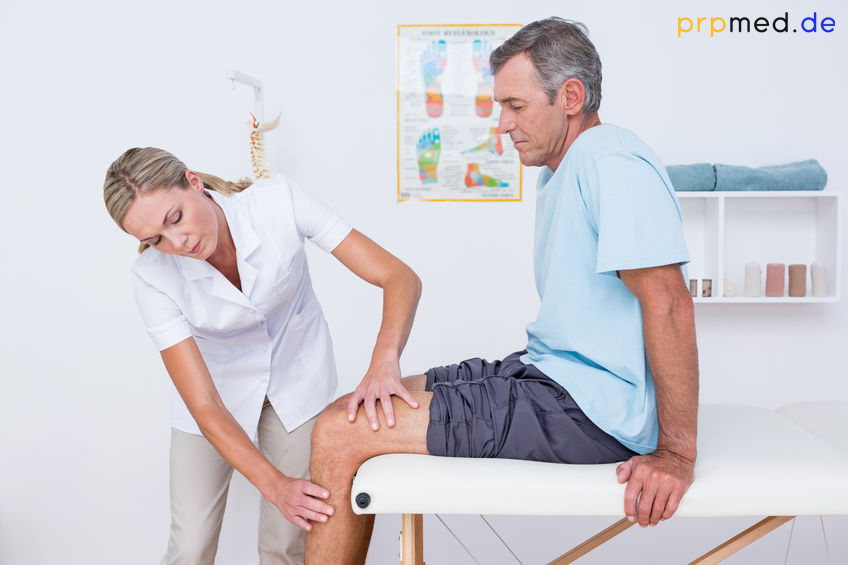
Treatment with PRP for arthritis and osteoarthritis
What is arthritis?
Arthritis is a group of diseases that cause joint pain, swelling, stiffness and limited mobility. Arthritis is the most common disease affecting millions of people worldwide. Particularly in the arms, knees, hips and back, the elastic buffers that protect the ends of bones with cartilage become worn down over time. Rheumatoid arthritis occurs when the immune system mistakenly attacks certain parts of the body. It attacks the lining of the joints and causes uncomfortable swelling. Symptoms include joint pain, stiffness (usually worse in the morning and after rest), fatigue, fever, and loss of appetite. Joint symptoms are usually the same on both sides of the body.
What causes osteoarthritis?
Osteoarthritis of the knee joint is mainly caused by aging of the articular cartilage, obesity and predisposition (genes), trauma such as bone fractures, ligament and meniscus injuries, and suppurative arthritis.
What is PRP treatment for arthritis?
PRP - Platelet Rich Plasma - modulates the inflammatory and catabolic milieu through a locally applied concentrate of platelets, leukocytes and growth factors. This suggests that treatment with platelet-rich plasma has an anti-inflammatory effect and converts a toxic joint degrading cartilage (catabolic - i.e., eroded or degraded) into a healing joint environment by introducing healing cells and growth factors into the damaged joint, thereby repairing lesions and tears in the cartilage. It also stimulates the formation of new cartilage.
Treatment with PRP, also known as platelet-rich plasma, has shown promise as a therapeutic option for the treatment of arthritis, particularly osteoarthritis. PRP is thought to promote wound healing, making it suitable for treating injuries and inflammatory conditions such as arthritis.
Injecting the body's own blood in the form of platelet-rich plasma directly into the affected joint can promote the body's own healing. It is especially important that the treatment be performed by a specialized physician to achieve the best results and minimize potential risks.
Research is also investigating the combination of PRP with hyaluronic acid (HA), which is known for its viscoelastic properties and as an essential component of articular cartilage. Two recent meta-analyses and systematic reviews from 2021 show superiority of combining PRP and HA over HA alone. However, the evidence is not yet clear and further research is needed.
Treatment with PRP has proven to be a valuable tool in the management of arthritis, and the goal is always to improve patients' quality of life and help them achieve a pain-free daily routine. However, it is important that patients are advised and treated by an experienced physician to achieve the best results and minimize potential risks.
What is the goal of PRP treatment for arthritis?
The goal of therapy is to treat the underlying problems and not just mask the painful symptoms. PRP therapy acts primarily to balance tissue repair at the molecular level and aims to relieve pain and stop progression of the deformity beyond the current level.
PRP treatment for hair loss and hair transplantation
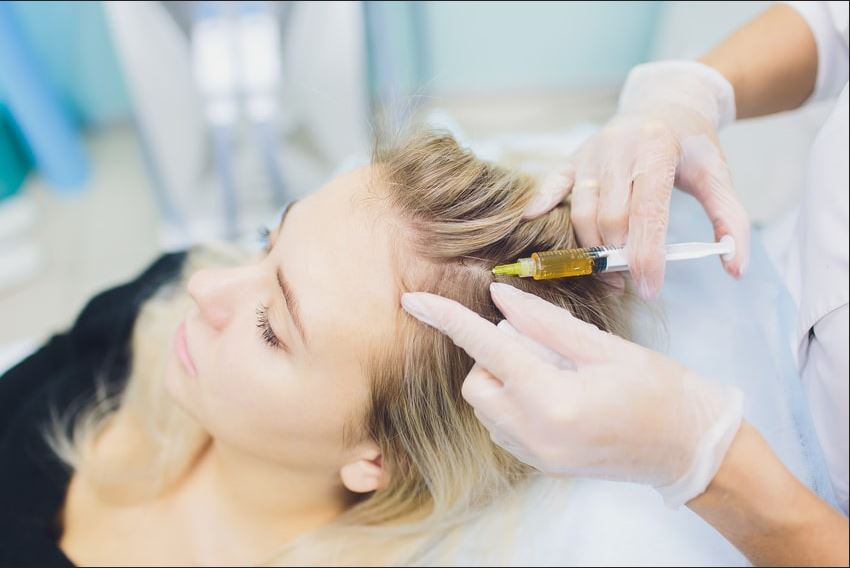
Have you ever heard about PRP treatment for hair loss? Or have you wondered if there really is an effective method to reverse hair loss? In this article you will find answers to these questions and more. Let's start with the basics.
What is PRP treatment for hair loss and hair transplant?
PRP stands for "platelet-rich plasma" and PRF for "platelet-rich fibrin". Both are treatment methods that use the patient's own blood to stimulate hair growth. They are unique in that they use the body's natural healing process to treat hair loss.
How does the autologous blood treatment for hair loss and hair transplant work?
PRP or PRF treatment uses the healing effect of the patient's own blood. In this procedure, blood is drawn from the patient, processed in a centrifuge to concentrate the platelets, and then injected into the scalp. The platelets release growth factors that can stimulate hair growth and reverse hair loss.
Treatment with PRP can help reverse hair loss and stimulate new hair growth. For successful treatment, it is important to choose a high quality clinic.
What is the procedure of PRP treatment for hair?
At the beginning of the treatment, a small amount of blood is taken from the patient. This blood is then treated in a centrifuge to isolate the platelet-rich portions of the blood. These are then injected into the scalp.
Is PRP treatment for hair safe and effective?
Yes, treatment with PRP is considered safe and effective. Many people have reported positive results and believe that PRP is an effective way to reverse hair loss and stimulate new hair growth.
The importance of PRP in hair transplantation
PRP can play an important role in hair transplantation by stimulating hair growth and accelerating healing. It can also help improve the final result of the transplant.
PRP (platelet rich plasma) is a treatment recommended after hair transplantation. It promotes blood circulation and strengthens the hair roots. PRP treatment after hair transplantation can optimize the supply of blood to the hair roots, creating the foundation for strong hair. PRP nourishes and strengthens hair follicles and accelerates wound healing. It reduces hair loss by 5%, which is considered normal after hair transplantation, and makes new hair grow stronger.
PRP is obtained by drawing blood from the patient. The blood is then centrifuged in a centrifuge to separate the plasma from the red blood cells. The plasma is then injected into the area where hair growth is to be stimulated.
PRP treatment for the prevention of hair loss
In addition to treating hair loss, PRP can also help prevent hair loss. It strengthens hair follicles and promotes hair growth, which can make hair appear thicker and fuller.
PRP to improve existing hair loss
PRP can not only help prevent hair loss, but also improve the appearance of already thinning or thinning hair. By stimulating hair growth, it can help hair appear thicker and fuller.
In summary, PRP is a promising treatment option for hair loss. It is safe, effective and uses the body's natural healing process to stimulate hair growth and reverse hair loss. Although PRP treatment is not for everyone, it can be a valuable option for many people suffering from hair loss. It is important to consult a qualified physician to discuss the best course of action and ensure that PRP treatment is right for you.
PRP treatment in aesthetics
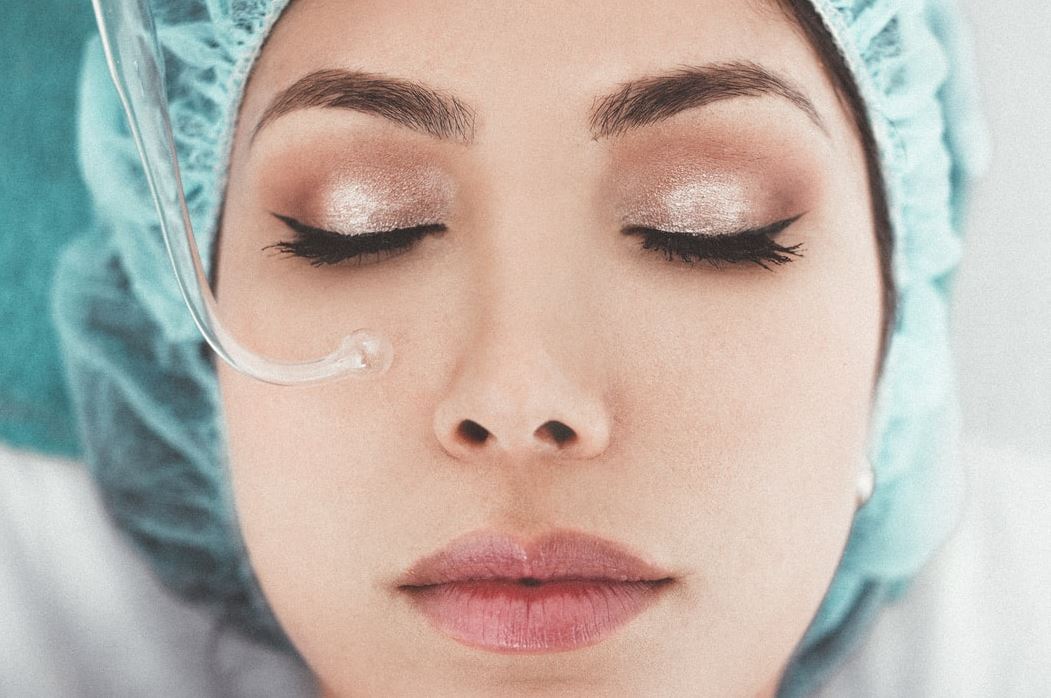
Photo by karelys Ruiz
In recent years, platelet-rich plasma (PRP) has emerged as a promising autologous biologic therapy for aesthetics and regenerative medicine.
Platelet-rich plasma (PRP) is an autologous serum containing excessive concentrations of platelets and growth factors. PRP treatment in dermatology is an important treatment method, especially in the areas of hair restoration, pores and skin rejuvenation, pimple scars, skin augmentation and striae distensae.
In addition, the combination of PRP technique with laser therapies, microneedling, dermal fillers, and autologous fat grafting leads to synergistic effects, especially for advanced aesthetic results. Future research needs to standardize PRP treatment protocols for individual indications. PRP therapy is a promising method in dermatology, and its applications are constantly expanding.
The PRP procedure can be performed on the face, neck, arms and the entire body. The effect is excellent: the skin becomes plumper and younger, fine lines and wrinkles are reduced and the contours of the skin are reshaped - for a youthful glow. The upper and lower eye area can be successfully treated. Fine lines and wrinkles. Aging and sagging skin.
The plasma method has proven to be a promising, safe and efficient cosmetic procedure.
The principle of the PRP method in aesthetics
The preparation of the treatment
For a PRP treatment, the patient is given a small amount of blood from the vein using special PRP tubes tubes. This blood is then pumped through a Centrifuge to obtain a serum rich in platelets and growth hormones.
The process of PRP treatment
This serum is then injected into the skin as in a traditional injection treatment.
How PRP promotes new cell formation
The role of fibroblasts
Injecting PRP signals to the body that new cells are needed in the area to be treated.
Formation of collagen, hyaluron and elastin
Fibroblasts and skin cells are stimulated to divide and produce new collagen, hyaluron and elastin.
PRP treatment compared to other aesthetic treatments
Comparison with Botox
Unlike Botox, which uses synthetic substances, treatment with PRP is completely natural and "ecological".
Advantages over other treatments
Unlike Botox, which uses synthetic substances, PRP treatment is completely natural and "ecological".
PRP treatment is a safe and effective method of skin rejuvenation. It uses the body's own growth factors to promote natural cell regeneration and create a fresh, youthful appearance.
NeedlingPen MEDICAL CONTROL - Professional microneedling set with 2 precision needle...
PRP Serum Cream
PRP Serum (PRP Regeneration Cream) is a universal and versatile PRP cream that promotes cell renewal, nourishes and hydrates the skin, prevents aging and fights inflammation. It can be used alone or in combination with your own plasma.
The product is designed to be customized for each client's needs and desires for their skin care. Plasma is rich in growth factors, hormones, vitamins, proteins and stem cells. Growth factors platelets play a very important role in any type of skin rejuvenation.
We are living in an exciting time in the world of regenerative medicine, and PRP treatment is at the forefront of these innovations. With its help, we can use our bodies to heal themselves in a natural and effective way. And the best part? It offers a safe and natural alternative to more invasive treatments. A true joy for those who strive for natural beauty and health.
PRP treatment for eye problems

Photo by Noelle Otto from Pexels
PRP technique can help with various eye diseases.
By using PRP eye drops, ophthalmologists can help sufferers overcome your eye condition.
- The growth factors in PRP repair the surface of the cornea and the membrane that covers it.
- PRP therapy accelerates the healing of corneal injuries with a smaller amount of scarring, so vision is clearer after treatment is complete.
- By using PRP, doctors can help reduce infection and pain.
- PRP can counteract the dangerous effects of dry eye syndrome.
- PRP serum acts as a lubricant to keep the eyes moist as it nourishes and heals.
- After LASIK surgery, PRP eye drops can speed healing and help prevent infection.
PRP treatment with eye drops
PRP eye drops have become a promising approach for the treatment of dry eye. In combination with other applications, they have attracted the attention of physicians and patients. But what exactly are PRP eye drops and how can they help?
What are PRP eye drops?
Platelet Rich Plasma (PRP) or platelet-rich plasma is a blood-derived substance used to promote wound healing. In the production of PRP, blood plasma and its components are concentrated to obtain a higher concentration of growth factors. This growth factor-enriched serum is then used as eye drops to treat dry eye symptoms and promote healing.
The harmful effects of dry eye syndrome
Dry eye can cause unpleasant symptoms such as itching, burning, redness and blurred vision. It occurs when the eyes are not adequately moisturized or the tear fluid is of poor quality. This can be caused by a variety of reasons, including age-related changes, environmental factors, certain medications or eye surgery such as LASIK. PRP eye drops can help alleviate the negative effects of dry eye and keep the eyes moist during the repair and healing process.
PRP treatment for back pain

Photo by Kindel Media from pexels
The role of PRP in back pain
Functional limitations and instability of the intervertebral disc tissue
Functional limitations and instability of the disc tissue can lead to chronic back pain. Treatment with PRP has shown promise as an option for alleviating these conditions. Platelet-rich plasma can help repair damaged tissue and improve disc function.
Functional limitations and instability of the intervertebral disc tissue
Unlike steroid injections, which are primarily for temporary symptom relief, treatment with PRP can actually help repair the damage underlying painful symptoms. Platelet-rich plasma contains growth factors that can promote tissue regeneration and stimulate the body's natural healing processes.
People with chronic back pain can also receive PRP injections to get relief. PRP works on the injured tissues, muscles and organs to minimize inflammation. Research has shown that PRP treatment helps relieve pain from the roots, providing a long-term solution to back pain.
Lower back pain is one of the most common complaints for both men and women, and the bad news is that as we age, lower back pain becomes more serious.
There can be many causes of lower back pain, but much lower back pain is related to the problem of the flabby discs that separate each pair of bones in the spine.
In fact, it is the herniated disc that causes sciatica that is one of the most common types of lower back pain.
Injections have been used for many years to reduce the inflammation of spondylolisthesis, or disc herniation, in the lower back.
Until recently, these injections also included steroids or other medications to reduce pain and swelling.
Recently, researchers have begun to explore natural alternatives to these medications, including platelet-rich plasma, or PRP.
PRP comes from your own blood and does not carry the same risks as steroids and other medications. Although steroid injections can relieve the symptoms of back pain, PRP injections can primarily relieve pain symptoms. Here's how back pain is treated with PRP treatment.
Comparison of PRP treatment with steroid injection
While steroid injections are designed to relieve the symptoms of lower back pain, treatment with PRP can actually help repair the damage that is causing the painful symptoms. Steroid injections often provide only temporary relief, while treatment with PRP can provide long-term results.
CONCLUSION
Treatment with PRP can be a promising option for patients with back pain. Platelet-rich plasma offers the ability to repair tissue damage and stimulate the body's natural healing processes. Although more research is needed, results to date show a positive effect in relieving pain and improving functional limitations. However, it is important to seek individual advice from a specialist to determine the suitability of PRP treatment in each case.
PRP treatment in gynecology
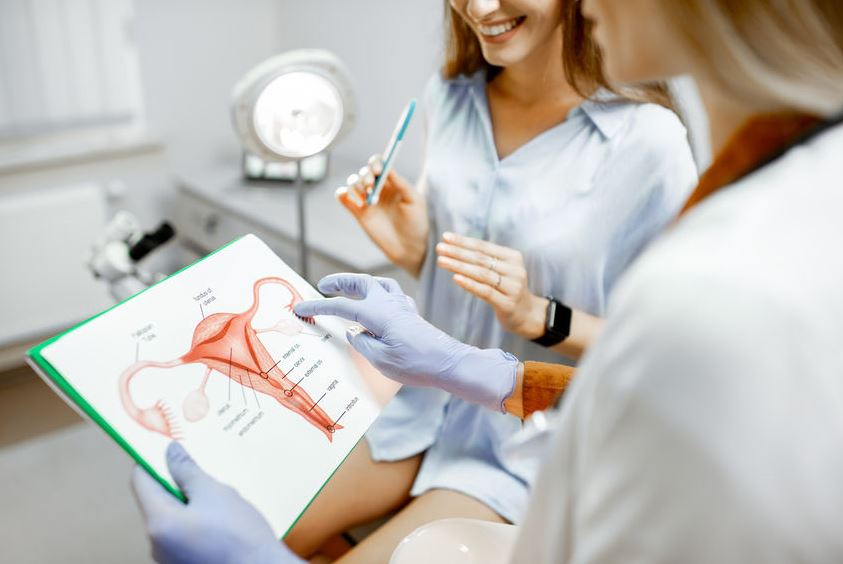
What is PRP treatment in gynecology?
In gynecology, platelet-rich plasma (PRP) treatment is increasingly used to treat various gynecological problems. PRP is an innovative approach that uses the body's own blood to produce platelet-rich plasma, which helps stimulate cell regeneration, neovascularization, and healthy cell formation. There are several variations of this therapy, such as PRP injections and PRP flushes, each with different goals in treating gynecologic conditions. In the following, we will take a closer look at treatment with PRP in gynecology and examine the various aspects of this innovative therapeutic method.
PRP treatment in gynecology refers to the use of platelet-rich plasma to treat various gynecological problems. In this treatment method, blood is drawn from the patient and the platelet-rich plasma is separated by centrifugation.
The aim of PRP treatment is to stimulate cell regeneration, neovascularization and the formation of healthy cells in the gynecological area.
Applications of PRP treatment in gynecology
PRP treatment in gynecology is used for various gynecological problems. Some of the most common applications of this therapy method are described below:
Applications of PRP treatment in gynecology
1. Vaginal rejuvenation and regeneration
PRP treatment is successfully used for vaginal rejuvenation and regeneration. Injection of platelet-rich plasma (PRP) into the vaginal tissue can promote cell regeneration and neovascularization, resulting in improved elasticity and tightening of the skin in the vaginal area.
3. Support of implantation during in vitro fertilization (IVF)
PRP flushing can be used in in vitro fertilization (IVF) to support implantation of the fertilized embryo. By flushing the uterine cavity with platelet-rich plasma, an optimal environment is created for the successful implantation of the embryo.
Mode of action of PRP treatment in gynecology
When PRP is administered to the mucosa of the cervix and vagina, it can be used as a stimulator of the regeneration process.
PRP treatment can stimulate capillary growth, normalize blood supply, metabolism and tissue nutrition, thereby accelerating tissue regeneration.
PRP injection can help repair mucous membranes. And to eliminate inflammation and dryness associated with cervicitis, lichen sclerosis (SC) and eczema. LS affects the vulva and causes extensive scarring that can also cause progressive itching, dyspareunia, and genital bleeding. It has a major impact on the quality of life of sufferers, interfering with physical activity, sexual pleasure and causing emotional and psychological problems.
PRP can restore film shrinkage and eliminate dryness. Platelets have been found to release about 35 growth factors that promote tissue growth, healing and regeneration.
Aesthetic gynecologists use it to perform surgeries such as vaginal rejuvenation.
- When PRP is administered to the mucosa of the cervix and vagina, it can be used as a stimulator of the regeneration process.
- PRP treatment can stimulate capillary growth, normalize blood supply, metabolism and tissue nutrition, thereby accelerating tissue regeneration.
- PRP injection can help repair mucous membranes. And to eliminate inflammation and dryness associated with cervicitis, lichen sclerosis (SC) and eczema. LS affects the vulva and causes extensive scarring that can also cause progressive itching, dyspareunia, and genital bleeding. It has a major impact on the quality of life of sufferers, interfering with physical activity, sexual pleasure and causing emotional and psychological problems.
- PRP can restore film shrinkage and eliminate dryness. Platelets have been found to release about 35 growth factors that promote tissue growth, healing and regeneration. Cosmetic gynecologists use it to perform surgeries such as vaginal rejuvenation.
The use of platelet-rich plasma in aesthetic gynecology is considered a new revolutionary non-surgical outpatient PRP treatment that can help improve urinary incontinence and sexual dysfunction through the use of female-specific growth factors.
Aesthetic surgeons use PRP to help regenerate the vaginal wall, muscles and skin.
After PRP is injected, the vaginal blood vessels dilate, resulting in a significant increase in sensitivity. In addition, the ligaments and muscles that support the urethra are strengthened, easing urinary incontinence.
When PRP is administered to the mucosa of the cervix and vagina, it can be used as a stimulator of the regeneration process.
Advantages of PRP treatment in gynecology
Although individual women's experiences may vary, many patients report the benefits from PRP therapy include
- Greater arousal due to clitoral stimulation
- Younger, smoother skin on the vulva
- A tighter vaginal opening
- Stronger orgasm
- Increased sexual desire
- Increased ability to have a vaginal orgasm
- Decreased pain from dyspareunia
- Increased natural lubrication
- Decreased or resolved urinary incontinence
In gynecology, PRP treatment is used in the following cases:
In gynecology, PRP treatment is used in the following cases
- The need to correct age-related changes in the female genitalia;
- Dryness, flaccidity, discomfort, pain in the external genitalia, discharge from the genital tract during peri- and postmenopause. 3;
- perineal trauma (postoperative scarring, conditions after gynecologic plastic surgery to accelerate the regeneration of the vaginal mucosa, to accelerate the restoration of elasticity and sensitivity of the mucosa);
- Discomfort, dryness, pain during intimate intercourse;
- Complex treatment of gynecological diseases: Erosion of the cervix, inflammatory diseases of the vaginal mucosa, bacterial vaginosis;
- Restoration of microflora in recurrent thrush.
The following complaints are possible: discomfort, itching, burning, discomfort in the external genital area and in the vagina, discharge from the genital tract.
It is treated as an outpatient and does not require special therapy.
However, as with any treatment, there are certain contraindications to the PRP method. It should not be used in cases of platelet dysfunction, acute infectious diseases, high platelet or fibrinogen levels, disorders of the coagulation system, chronic liver diseases, presence of oncological diseases in the medical history. Women who are pregnant or breastfeeding should also avoid it.
PRP treatment in urology
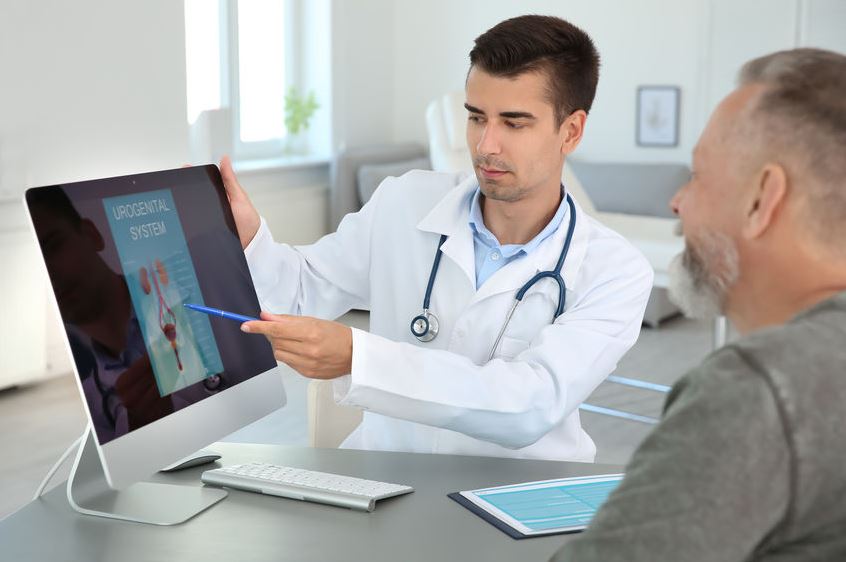
PRP treatment in urology: an innovative solution for erectile dysfunction
Treatment with platelet-rich plasma (PRP) is a proven therapeutic procedure that has been used successfully in dermatology and orthopedics for several years. Now this innovative procedure has also become established in urology for the treatment and maintenance of erectile dysfunction. The PRP procedure offers men with erectile dysfunction a promising solution.
Fields of application of PRP treatment in urology
Treatment with PRP offers a promising solution for men suffering from erectile dysfunction. Erectile dysfunction can have various causes, including circulatory disorders, diabetes or even psychological factors. Treatment with PRP can activate self-healing processes in the tissue and promote blood flow, which can lead to an improvement in sexual function.
1. Erectile dysfunction treatment
Treatment with PRP in urology has the potential to significantly improve the quality of life of men with erectile dysfunction. By injecting the concentrated plasma into the affected area, growth factors and platelets can develop their regenerative properties and stimulate blood flow and tissue regeneration.
2. Support sexual performance
In addition to treating erectile dysfunction, PRP therapy can also be used to improve sexual performance. It can help increase sexual satisfaction and regain confidence in bed.
Age, the use of certain medications, and various health conditions can disrupt men's reproductive systems, reducing performance and decreasing sexual desire.
Platelet-rich plasma treatment also helps restore normal sexual function in men with prostate problems and other problems related to sexual activity.
Not only does the skin look more radiant and youthful. Men's and women's emotions have increased, providing more pleasure and satisfaction.
Most men report these improvements after PRP treatment:
- Increases erection firmness
- Increased blood flow and circulation
- Improved sexual ability
- Increase sexual stamina
- Increases sensation and pleasure
- Improves appearance
- Improves or resolves prostate discomfort
- Improves or resolves urinary incontinence
When it comes to improving potency, PRP has many benefits. Not only does this procedure provide more stamina and a stronger feeling, but it also increases libido and reduces pain and discomfort.
The appearance of the genitals is rejuvenated and the tissues become softer, harder and more elastic. Women who use PRP can experience the benefits of improving their G-spot for better orgasm.
Men who suffer from erectile dysfunction (potency problems) can also use PRP therapy to improve their sexual performance and get longer erections. The risk of incontinence is also greatly reduced, giving both men and women better control of their bodies.
A PRP procedure provides energetic gifts that allow a person to fully satisfy their partner and guarantee their own happiness. Both parties can reap these benefits, allowing them to enjoy all aspects of sex life.
Implementation of PRP treatment in urology
Treatment with PRP takes place in several steps. First, a small amount of blood is drawn from the patient, usually from a vein in the arm. The blood is then separated in a centrifuge to obtain the platelet-rich plasma. This plasma is then injected specifically into the affected area to make the most of its regenerative properties.
Treatment with PRP has established itself as a promising therapeutic option for men with erectile dysfunction. By activating self-healing processes and promoting blood flow, it can lead to improved sexual function. The implementation of the treatment requires the expertise of a qualified urologist and should be discussed individually with the physician.
- The safety of PRP treatment is an important aspect considered by both patients and healthcare professionals. There are several reasons why PRP treatment is considered safe.
- Use of special blood collection systems: Special blood collection systems are used during PRP treatment to ensure a high level of safety against blood contamination. This minimizes the risk of infection.
- Low-risk procedure: Treatment with PRP is considered a low-risk procedure. Since this type of therapy uses the patient's own blood, allergic reactions are considered unlikely.
- Allergic reactions unlikely: Since PRP treatment uses the patient's own blood, there is usually no risk of allergic reactions.
- Possible side effects and their time course: After PRP therapy, you may experience temporary increased pain in the days following treatment, but this will subside.
One of the biggest advantages of the PRP method is the safety it offers. Unlike many other therapies, PRP treatment uses your own blood.
No foreign bodies can enter your body during this treatment. For this reason, you do not have to worry about any side effects from the treatment.
PRP injections are very safe, so they are often used as post-surgical treatments.
Since the PRP procedure is a minimally invasive procedure, you do not have to worry about incisions and stitches.
PRP therapy is performed only in the form of injections: First, blood is drawn, and second, the PRP is injected into the area to be treated.
This greatly reduces the risk of infection. Not to mention, unlike surgery, you won't have any pain associated with tissue trauma.
You also do not have to stay in the hospital for this treatment, but can have it done during your regular doctor's appointment.
After the treatment is completed, you can go about your daily business.
You may feel some pain, but it will be temporary. This means you don't have to worry about staying in the hospital.
Conclusion on the safety of PRP treatment
Treatment with PRP is considered safe and low-risk. The use of special blood collection systems ensures a high level of safety against blood contamination. Allergic reactions are unlikely, as the patient's own blood is used. Possible side effects such as temporary pain usually subside quickly. Nevertheless, it is important to find out about the advantages and disadvantages of this therapy and to discuss individual risk factors with a specialist.
Guidelines before PRP treatment

- Discontinue anti-inflammatory medications at least three to four days before the procedure
- Discontinue any blood-thinning herbs, supplements or vitamins one to two weeks before the procedure
- Discontinue systematic steroids one to two weeks before the procedure
- Discontinue steroid injections at least one month before your procedure
- Eat a hearty, healthy breakfast and drink plenty of water on the day of your procedure
- Please note that if you are taking chronic oral steroids, a discontinuation plan must be discussed with your primary care physician, as sudden discontinuation may cause side effects.
The role of insurance before PRP treatment
In Germany, it must be clarified before PRP therapy whether the costs are covered by private health insurance.
Precautions after PRP treatment in orthopedics

After your PRP therapy session, we recommend that all patients rest the day of their procedure. For the next 2 days, we recommend limited use of the injection area, but exercise is recommended.
After your treatment, there is a possibility that you may experience mild to moderate pain or discomfort at the injection site. This is normal and a sign that your body is healing as it adjusts to the injection. It is best to stay hydrated and drink plenty of water to promote healing.
It is important that you DO NOT take any medications after your procedure unless a doctor specifically instructs you otherwise. This is because any medication may affect the healing process or other adverse effects.
Therefore, discontinue the use of any of these medications after your procedure for best results:
- Anti-inflammatory medications for at least 2 weeks after the procedure
- Blood-thinning herbs, supplements or vitamins for 3-4 days after the procedure
- Systemic steroids for 2 weeks after the procedure
- Other important guidelines to follow after your PRP procedure include:
- Avoid applying ice or heat to the injection site for the first 72 hours after the procedure
- Do not take a hot bath or go to the sauna for the first few days after your procedure
- Avoid drinking alcoholic beverages for the first week after the procedure
- Avoid showering in the first 24 hours after the procedure
- Limit caffeine consumption in the first week after the procedure
- Avoid smoking
Precautions after PRP facial treatments
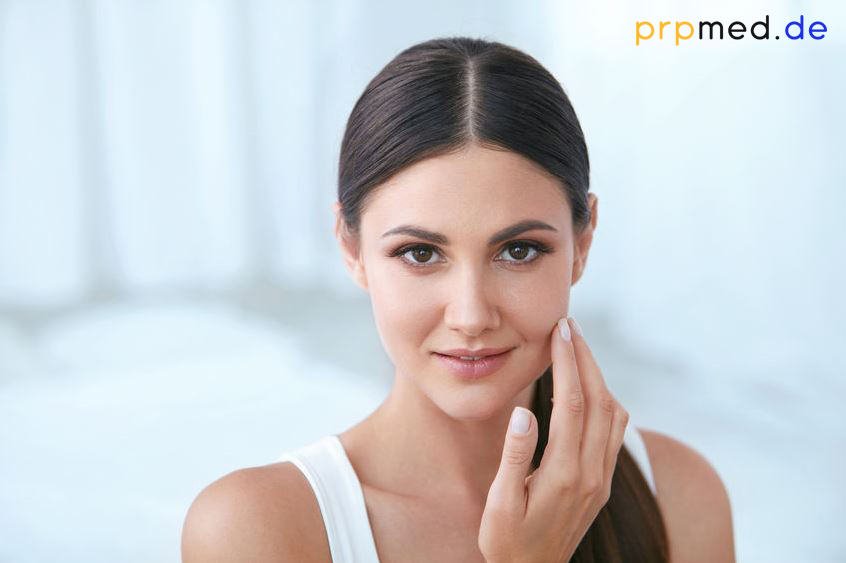
Some degree of redness and swelling is normal, but it is recommended to take a few days off from strenuous tasks.
You can resume your daily exercise immediately after the procedure. However, if you were exposed to pollutants or hazardous chemical compounds and vapors during the procedure, you will need to take a few days off.
Typically, swimming pool water contains dangerous chemical compounds, so you should stay away from that as well.
Sauna visits and steam baths can expose your pores and skin to excessive warmth, which your physician can also warn you about. When you shower, choose warm water for a few days.
Be sure to use sunscreen for at least three days if you go outside at any point during the day.
Your dermatologist may ask you not to wash your face for four to 24 hours after your procedure. It's high quality that you don't disturb your pores and skin whereas the restoration is taking place. If you really need to wash your pores and skin, use a mild, natural remedy and pat dry. Avoid rubbing or pulling.
Particularly recommended after a PRP facial treatment PRP cream to use. Use PRP serum cream to rehabilitate the skin after aggressive cosmetic treatments: Laser therapy, photo rejuvenation, peeling and other invasive procedures. The application of serum accelerates the healing processes in the skin, promotes microcirculation and skin respiration.
Additionally, as one of the precautions after PRP injection, your treating physician may talk about postponing other facial treatments or procedures that you may have covered up. These include ablative lasers, peels or other strategies that contain harsh chemical compounds and excessive rubbing.
Precautions after PRP hair treatment
As with all PRP hair treatments, your trichologist will ask you to stay away from anti-inflammatory medications. Swelling is a nice effect of the method and will probably persist for two to three days. Additionally, you may observe slight redness or numbness inside the scalp.
- Avoid rubbing or pressing the scalp for a few days.
- You can shampoo your hair properly tomorrow or 12 hours after the method.
- Restrict sun exposure for a few days. Wear a hat if you should go out throughout the day.
- Do not restrict exercise or physically demanding activities now.
- Refrain from using harsh chemicals on the scalp for at least seventy two hours after the method.
- If you normally use Minoxidil 82M or another topical hair growth product, you may continue treatment after consulting with your doctor.
Take appropriate precautions after injecting PRP to achieve the best results.
PRP therapy is a safe and effective therapy that can help you solve various medical and cosmetic problems. For best results, it is recommended that you follow your doctor's instructions. If necessary, you should repeat the examination and treatment. A little attention can help your body to recover.
Are there any side effects with PRP treatment?
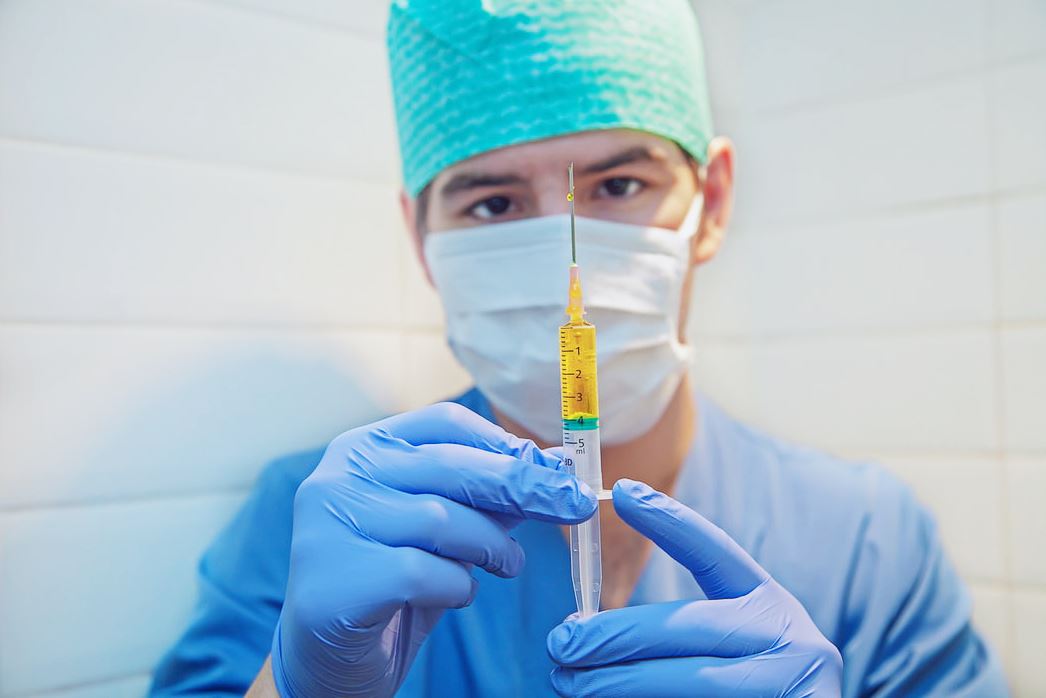
Since PRP involves injecting substances directly from the blood, the risk of infection and rejection is minimal. However, there are risks associated with the injection itself, such as pain at the injection site, nerve damage, and tissue damage. Learn about the potential risks and how he/she can minimize them. Because PRP injection stimulates natural healing, it may take a while for you to notice the difference.
PRP therapy is not a cure-all. Side effects may occur, and some are important. These are the most common.
Pain at the injection site.
Some people who receive PRP therapy experience severe pain at the injection site. Sometimes this pain is also felt deep in the muscles or bone area.
Infection
Although great precautions have been taken when administering PRP serum to patients, strict sterilization procedures should be followed for each treatment. Sometimes infection may occur in the injured area.
There is no improvement in the injured area.
Although this is not necessarily a side effect, we must point out that not all athletes respond to PRP injections. (Of course, this particular type of sports medicine is being further researched so that we can understand exactly why). Sometimes, even after a long break after PRP treatment, the initial pain and the pain caused by the injury persist (they even worsen).
Allergic reactions
In some patients, the body rejects its own serum and reacts negatively to the treatment. This situation is rare, but it does happen. Again, more research is needed to understand why.
Damage to the inner wall of blood vessels, such as cuts.
By using a needle (guided by ultrasound) to inject PRP, it is possible to damage arteries or veins. When this happens, a blood clot forms and is treated like a normal blood clot.
Skin discoloration
After PRP injection, sometimes there is discoloration of the skin. This may be normal, depending on the person who has suffered bruising in the past. See a doctor as soon as possible.
If any of the above side effects occur after PRP injection, please contact your doctor as soon as possible.
Advantages of PRP treatment

PRP treatment has many benefits that make it a good choice for people with pain anywhere on the body.
These are just a few of the many benefits offered by this plasma treatment procedure.
- Chronic or non-responsive problems, such as: injuries that cannot be healed normally over time. Platelet-rich plasma can actually reactivate the body's natural healing system here, kick-starting the healing process at a tremendous cost.
- For people suffering from endless chronic pain, PRP injections may be able to boost the halted recovery process.
- PRP treatment is a natural treatment method that promotes hair and collagen growth.
- The treatment can help with various eye problems such as dry eyes, corneal injuries and inflammation.
- PRP treatment can also be used to treat eye diseases such as macular degeneration and glaucoma.
- The treatment can also help with joint pain and injuries.
- PRP treatment can also help with skin problems such as acne and scars.
- The treatment is minimally invasive and does not require surgery or anesthesia.
- There are no side effects or risks associated with treatment with PRP.
One of the best things about the PRP technique is the very limited side effects. Because it is derived from the patient's own blood, it is unlikely to cause a negative reaction when it is returned to the body.
In addition, the recovery time is usually short, allowing patients to return to their normal lifestyle more quickly. PRP treatment is non-invasive. It involves either drawing blood from the patient or injecting platelet-rich plasma into the affected area. Healing is much faster, and the risk of infection or complications is limited.
Scars can add character, but they can also be painful reminders of the surgery and are usually unattractive. For the rest of the surgery, the incision or suture will need to be removed later.
PRP therapy is a great option for any body because there are no scars left from surgery, incisions or stitches that need to be removed later. Imagine the benefits that PRP treatment offers for cosmetic reasons such as hair loss or promoting collagen growth.
High concentration of growth factors
A major advantage of PRP treatment is the high concentration of growth factors and regenerative substances in the treated plasma. These can help support the natural healing and regeneration of damaged tissue.
Use in different areas
Another great advantage of PRP therapy is its versatility. It can be used for a wide range of ailments and diseases, from orthopedic complaints and skin diseases to allergies and respiratory diseases.
Minimal risk of allergic reactions
Another great advantage of PRP therapy is its versatility. It can be used for a wide range of ailments and diseases, from orthopedic complaints and skin diseases to allergies and respiratory diseases.
In general, PRP injections are painless. This may vary depending on the patient or the area of the body being injected. Your doctor may recommend that you use a local anesthetic to control these symptoms. General anesthesia is not usually used with.
How often does PRP treatment need to be performed?
This largely depends on the specific circumstances in which you are being treated. Some patients experienced significant improvement with just a single PRP treatment. However, between two and six treatments for a single condition are not uncommon.
A PRP treatment begins with a consultation and includes the following: During the consultation, you will be asked many questions about your condition, symptoms, general health, and treatment options you have tried in the past.
This will help your doctor determine if platelet-rich plasma therapy is right for you.
In addition, your answers to these questions can give you a rough idea of how many PRP sessions may be needed.
The price of a PRP session will consist of many factors:
- The qualifications of the doctor who performs the manipulations and the ranking of the clinic
- Price list of the selected clinic / practice
- The cost of a preliminary (consultative) doctor's visit
- The cost of tests that can be performed at the same place where the therapy is performed or in advance at the local clinic
- The duration and frequency of PRP therapies
- Course objectives (post-surgical recovery, joint treatment or anti-aging therapy, etc.)
- Scope of work
Platelet-Rich Plasma treatment can be used to treat a variety of conditions. This means that there is an excellent chance that you can benefit from this therapy.
For most people, PRP therapy can replace surgery and is a popular and effective alternative. This process can be performed in your doctor's office and usually takes less than an hour. However, depending on the severity of the injury, multiple injections may be required.
Although PRP is a safe, non-invasive treatment option for most people, it may not be suitable for everyone.
Be sure to inform your doctor if you have the following conditions:
- Cancer that has not cleared for at least 5 years
- other types of cancer or blood-borne diseases
- persistent infections caused by taking coumarin or other blood thinners
- Cerebral palsy or Parkinson's disease
There are other conditions that may affect your doctor's decision about whether to continue PRP treatment. For example, in more severe cases of osteoarthritis or when diagnostic imaging has shown clear signs of structural damage, PRP treatment is generally not recommended in such cases.
As always, you should be as open and honest as possible when discussing PRP with your physician.
Book the right online course now!
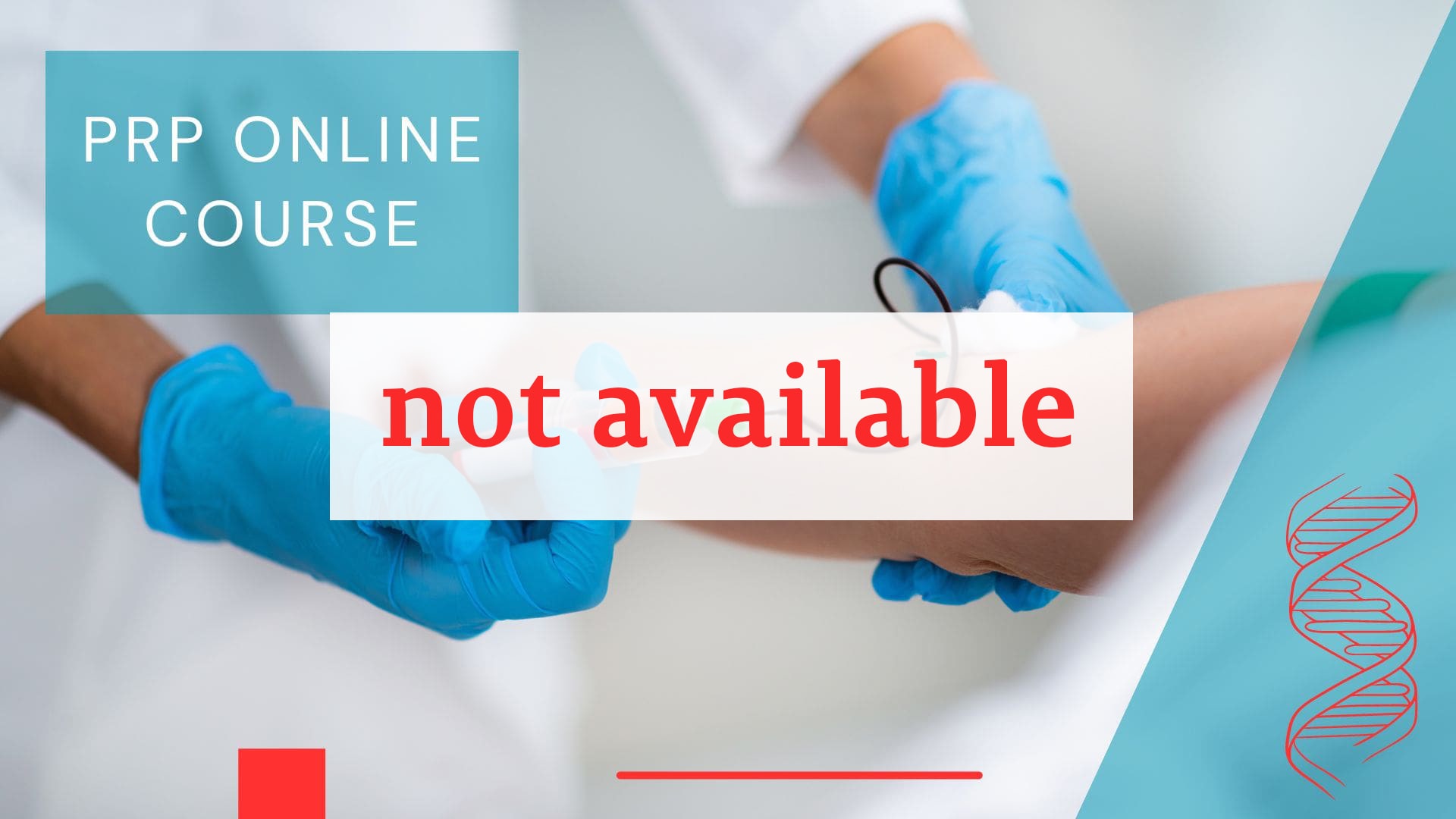
PRP therapy and its application in orthopaedics
9 lessons | € 299,00

